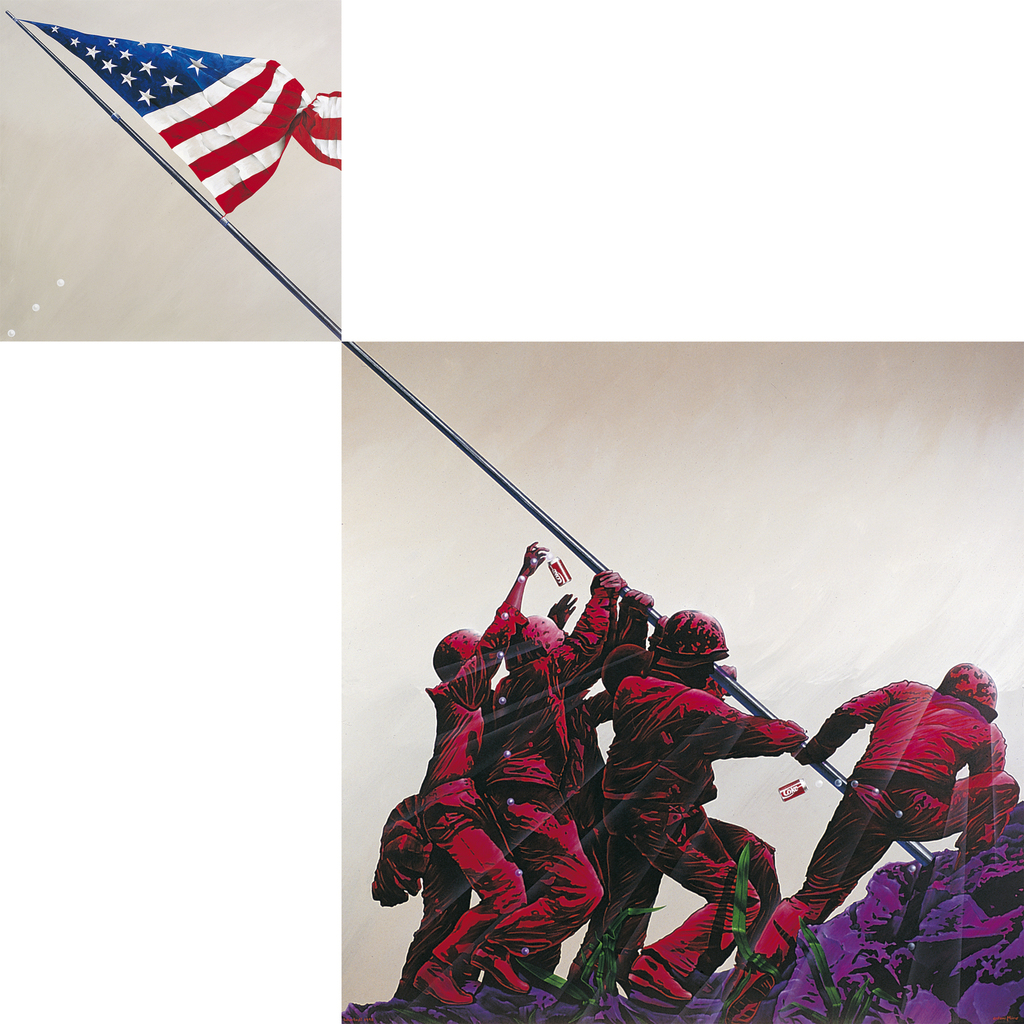Interludi (Interlude)
The inspiration for Miró’s work is Rosenthal’s well-known photograph — Raising the flag on Iwo Jima (1945). The photo is one of the 20th Century’s most iconic pieces of picture-journalism and earned Rosenthal the Pulitzer Prize in the same year. The photo was a useful propaganda tool under the administrations of presidents Roosevelt and Truman in the closing stages of World War II.
US hegemony following the country’s victory in World War II led to the spreading of an American lifestyle throughout the West. The Consumer Society is, without any doubt, the widespread epitome of The American Way of Life. This was probably the most notorious result of the war and Coca-Cola is one of the brands that best symbolises this leadership.
The artist denounces the mercantilist criteria that, in his view, are the driving forces behind Yankee Imperialism. Miró does this by metaphorically identifying Coca-Cola with cocaine. That is why he uses unnatural colours, revealing that soldiers’ (and consumers’) perception of the risk they run has been altered. The use of three intense colour filters artificially dye the soldiers red and the rocky summit they are scaling purple. The leaves springing from between the rocks are green. The bubbles are also worth mentioning as they lend the composition a dreamlike look. Yet, these alterations do not change the facts of America’s abuse of might as the world’s strongest super-power, which the artist symbolises in this scene.
In his selective strategy, the artist reduces the starting image to its two main significant structures, which in this case are shown in colour, unlike in the original photograph. The flag and the US Marines hoisting it are framed in two squares of different sizes that line up diagonally. The title Interlude conveys the idea that wars are bitter episodes that take place between other events of greater scope and importance.
Apart from a particular partial framing, and the addition of various elements absent in the original photo that reinforce the message (the tins of Coca-Cola), this painting produces both a transformation and a refinement of an aesthetic effect. This is embodied by details including the sharpening of the Japanese water pipe used as a mast and the way the stars gradually shrink in size towards the top of the flag. The background has been removed, turning it into a flat plain, without the clouds in the original photo and far from the real blue hues, in order to further highlight the key elements.
Santiago Pastor Vila
